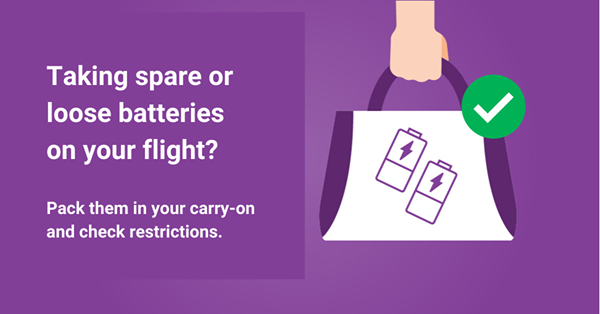From 1 January 2021, no loose or spare batteries will be allowed in passengers' checked-in baggage.
The restrictions are due to changes to the International Air Transport Association (IATA) Dangerous Goods Regulations. The changes apply to all loose or spare batteries including batteries in their original retail packaging.
Passengers may take up to 20 loose or spare batteries of any type (including AAA, AA, C cell, D cell and 9-Volt) in carry-on baggage, unless their airline has approved the carriage of more batteries.
Loose or spare batteries in carry-on luggage must be protected by being in their original retail packaging, or an individual bag or protective pouch for each battery, or with tape placed over exposed terminals.
We x-ray bags going on planes to make sure there is nothing dangerous in them. If something comes up on the x-ray that needs checking, the bag will be opened, searched and any dangerous or prohibited item will be removed.
Batteries can overheat and catch fire.
Fly safely and securely this summer and don’t get caught out with loose batteries in your checked-in baggage.
